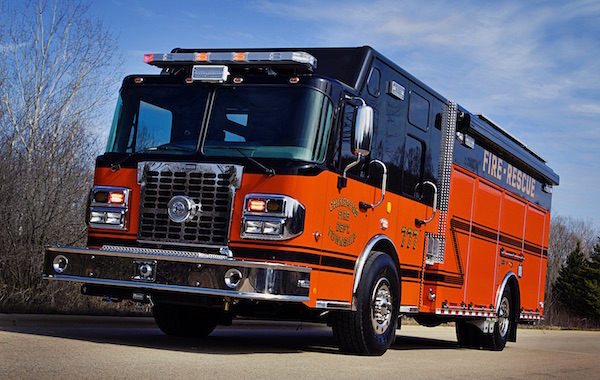While rescue pumpers have become very popular in the Fire & Emergency industry, many departments are questioning whether this is the best choice for them or if a heavy rescue is a better fit. There are pros and cons, of course, to each, so taking time to think through how each aligns with your department’s needs is critical before making an investment in either direction. Here are a few things to consider when identifying the best vehicle for your fleet:
1. What services do you provide beyond fire and basic auto extrication that you expect to incorporate into a vehicle design?
A rescue pumper is a great way to blend two vehicles into one, and usually the storage space will accommodate most of your commonly used equipment. Space can be limited, though, for large storage needs or for transverse equipment. If your department is looking to provide specialty services, such as high angle, confined space, trench, or grain bin rescue, a rescue pumper might not provide enough space for these types of equipment.
2. Does your auto extrication require multiple tools and heavy cribbing?
Large air bags, multiple unit deployment and heavy volumes of cribbing can be a battle with large water tank apparatus (500-1,000 gallons). If so, a heavy rescue is probably your best bet.
3. Will your new rescue require command unit space?
Where will a multi-agency or unified command take place in your response area? Many departments are preparing vehicles to have space for smaller event management. However, increased mutual aid naturally increases the need for staging, accountability and communications, and more space for support personnel, so a vehicle that will accommodate personnel and additional communication equipment may need to be part of your long-term planning.
4. What are your storage space needs?
Each department needs to review what equipment it will need to carry, but most of the daily use equipment can be stored in areas with 27-inch depth. A small water tank, which requires a minimal amount of transverse storage, might be a practical option for your department, especially if the truck has to multitask during low-volume staffing.
5. Where do you want to store equipment for easy access?
A true rescue pumper will carry a complement of NFPA-required hose and ladders, which can take away critical storage space and nearly the entire top of a vehicle. If your mission requires bulk storage items, such as absorbents or overpack drums, store these in a roof area – they’re bulky but lightweight, and don’t have to be accessed as frequently from the ground. Whether it’s a rescue or a rescue pumper, safe egress planning is critical for these mission trucks, so make sure you ask your representative for ideas on how to access equipment safely.
6. Will the commitments of a rescue pumper serving as an engine limit your rescue response?
Keep in mind that any multitask vehicle can help you do more, but it usually can only function well as one thing at a time. For example, when talking about tanker pumpers, a rescue pumper can usually do one or the other, so knowing its limitations is important. Ask yourself if it will prohibit frequent rescue responses should it be actively used as an on-scene pumper.
7. Remember that a multi-purpose apparatus’s life expectancy can be affected by its roles.
Essentially turning two vehicles to one is certainly appealing, especially when you consider shrinking budgets, but think about the long-term impact of a vehicle responding to greater volumes of calls requiring a shorter replacement schedule.
At Marion Body Works, we don’t just build some of the very best trucks on the market; we also work with departments across the country to help determine the right equipment for their short- and long-term requirements. Why not reach out to our team of experts to talk about your department’s unique needs?
